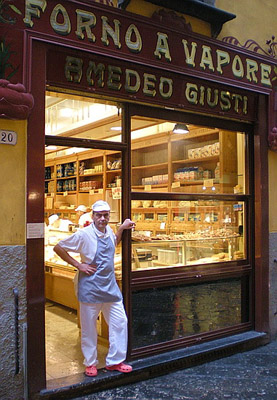
Obsiously the name Paolo Nutini is Italian and he is after all, an honorary citizen of Barga but from the opening notes of this album, the singer is unmistakeably scottish.
So, how come a nice italian boy like Paolo Nutini is a native of Paisley is the kind of place which is dimesse by residents of Glasgows its larger, brasher neighbour as “just a wee place outside Glasgow”, but in fact it ha san honourable history of its own, a university, a fine ancient abbey, and at one time Paisly pattern, you remeber? A thread and cloth industry to rival that of Lucca, where indeed the Paisly based Coats thread business still exists as Cucirini Cantoni Coats albeit now in sadly dimished form.
And Paisley has fish and chip shops. Which is the key to why the Nutinis (and indeed the cardini, Valentes, Fuscos, Narduccis, Equis, Castelvecchias et al.) thrived in the west of Scootland. As part of successive waves of emigration from Italy in the early 20th century (and will someone please remind the Lega Nord?) many italians from Garfagnana area come to Scotland to fond work.
perhaps they were headded for the ports where the great Atlantic ships could take them to the promised land of America, and either ran out of money or were seduced by the steady West of Scotland drizzle who knows?
But many stayed. And opened ice cream cafes, wich rapidly diversified into fish and chip shop sto suit the local climate and palate. Which is why there have now been four generations of Nutinis in Paisley, with their origins in Barga.
But anyway, what about the music?
Young Paolo arrived an the music scene in 2006 with his debut album for Atlantic Records, no less called “Theese Streets” which went on to sell over two million copies. Not bad for a 19 year old.
Since then, there have been extensive tours, support acts for Led Zeppelin and the Rolling Stones and tributes, from Liza Minelli and Rod Stweart, both fans. He is currently Touring in the United States, and Italian fans can look forward to seeing him here in the late autumn.
Launched at the beginning of June, his new album “Sunny Side Up” is refreshingly personal, unprocessed, joyful musicmaking from Nutini and his band the Vipers with a decidedly old-fashioned sound. He claims toh ave been able to do pretty much as he pleased with this album, to enjoy himself and reflect much of the musi che grew up with. One suspects there was a fair amount of Bob Dylan played in the Nutini household, not to mention otis redding and Bob Marley with maybe a wee bit of Lonnie Dinegan and Louis Prima.
Think R & B, soul, reggae and country rock, with a bit of ragtime for good measure.
His voice can be gruff he certainly sounds a lot older than 22 and one on the single “Candy” taken from the album, one reviewer has descrive him as “sounding spookily like a Scottish Bruce Springsteen”.
These days of course an album is scarcely more then a concept, with fans able to download their preferred tracks and ignore the rest. Potentially disheartening for artists, this maybe in fact gives them the freedom to experiment and be themselves, knowing that fans are not now oblie to buy the whole package.
The tracks which are already emerging as favourite are Candy, Tricks of the Trade, 10/10, Growing Up Beside You and (my favourite) Coming Up Easy.
The title “Sunny Side Up” certainly seems to reflect the Nutini philosophy.
No angst here, just positive thinking and a bit of homespun philosophy. And he’s italian at heart, he loves his Mum and Dad.
So what if the lyrics get a title banal sometimes? This is feelgood summer music for bopping to in the open air, while the drinks nare chilling. Enjoy!





